AMERICAN ESSENCE BY BRIGHT MAGAZINE GROUP
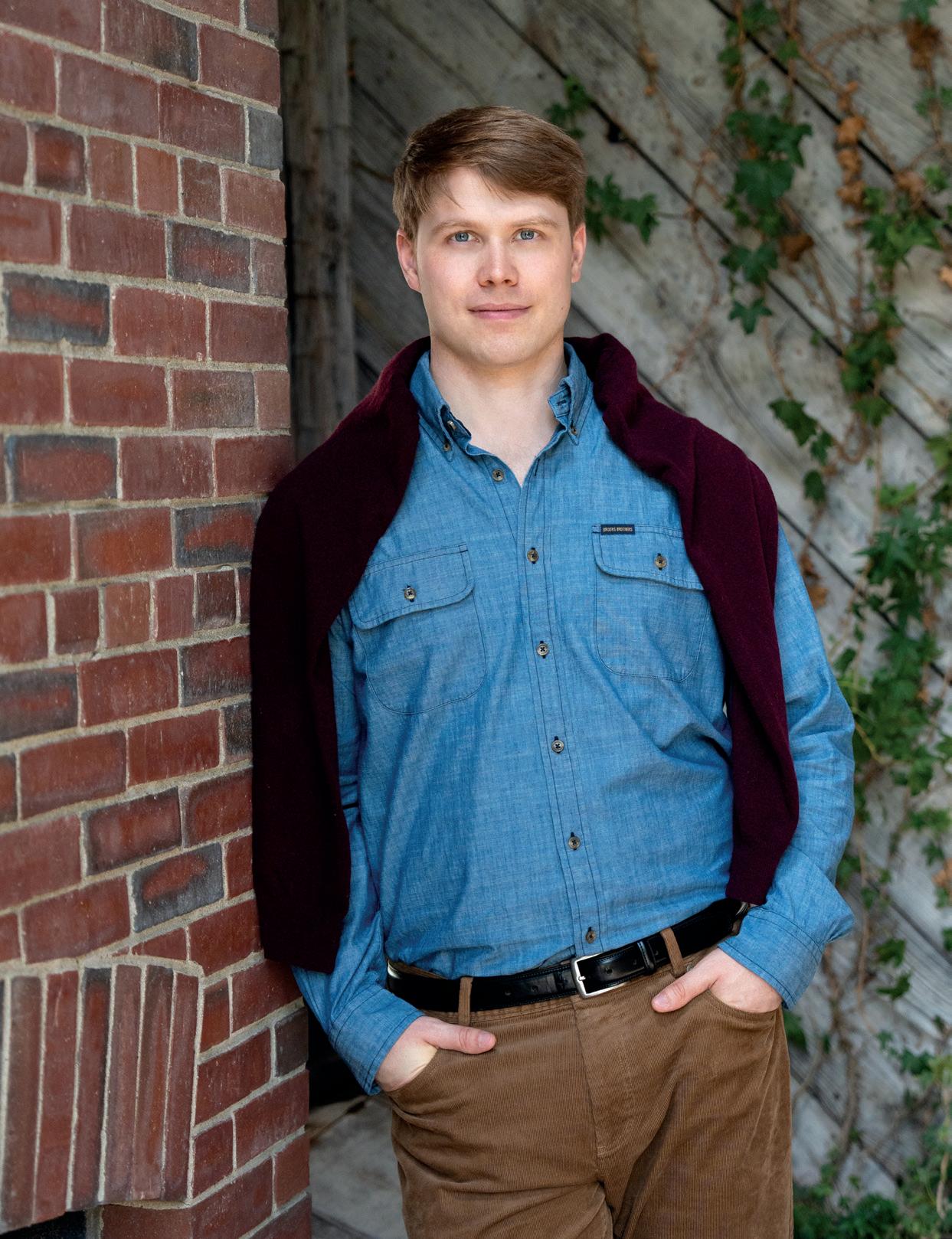
The Sound of Holiday Music Celebrating Christmastime at the von Trapp Family Lodge

AMERICAN ESSENCE BY BRIGHT MAGAZINE GROUP

The Sound of Holiday Music Celebrating Christmastime at the von Trapp Family Lodge
MC John Perry on countering the Chinese Communist Party’s repression through art

“There are no words that can tell the hidden spirit of the wilderness, that can reveal its mystery, its melancholy, and its charm.”
Theodore Roosevelt



12 | Spirit of the Season
From reindeer walks to Christmas markets, here are five places that celebrate the holiday creatively.
14 | Family Gatherings
Family rituals, silly or serious, build lasting bonds between generations.
16 | In the Spotlight
How a self-described “typical Southern boy” landed on the global stage, poised to make a difference in the world.
24 | A Heart for Family Actress Jen Lilley talks about her inspiring foster-to-adopt journey.
28 | Santa’s Big Night
The North American Aerospace Defense Command goes all in to make Christmas Eve a spectacular evening.
32 | Teaching the True Meaning of Giving
A schoolteacher in Phoenix, Arizona, helps his students understand what the holiday spirit represents.
34 | Family-Friendly Entertainment
How two dads built a safer streaming service for kids.

36 | The Sound of Music Christmastime is full of song at Vermont’s von Trapp Family Lodge.
42 | The Great Connector
For Phil Rosenthal, of “Somebody Feed Phil,” food brings people together in the most delicious way.
48 | Building Character
Homesteader RuthAnn Zimmerman weighs in on the value of chores for children.
52 | Tales From the Farm
What happened when two sisters from Washington state decided to leave their corporate jobs and open a charming soda shop in an old coal town.
56 | Labor of Love
A veteran repurposes wine crates into intricate dollhouses for children.

58 | Harmony of Science and Music
Einstein’s love of music played a paramount role in his professional pursuits.
62 | Eradicating Poverty Housing
The founders of Habitat for Humanity launched the Fuller Center for Housing to stay true to their original vision.
66 | The Working-Class Banker
A.P. Giannini pioneered a number of concepts to make it easier for citizens to own automobiles, homes, and small businesses.
70 | Home-and-Hearth Songs
Musician Hoagy Carmichael is credited with composing four of the most beloved and timeless melodies.
73 | ‘The Christmas Song’
How a hot summer day helped create an iconic Christmas melody.
78 | What the Doctor Ordered
Dr. Ben Carson reflects on the importance of family in America.
82 | Wisconsin’s Illuminated Christmas
Hearthstone Historic House Museum celebrates its electrical history in Victorian style.
88 | Why I Love America
A reader’s visit to Williamsburg, Virginia, on Christmas Day prompts a reflection on why America is unlike any other place on Earth.
90 | Family Roots
Letters from Krista Thomas’s grandfather and his siblings reveal how they relied on each other to survive through war and turmoil.
92 | Connections Transcending Time
Author Linda Zimmermann’s 30-year journey researching the life of Civil War soldier Sgt. Albion Brooks.
98 | Rx for Life
What’s behind your holiday-related anxieties, according to psychiatrist and neuroscientist Dr. Judson Brewer.

BY BRIGHT MAGAZINE GROUP
PUBLISHER
Dana Cheng, PhD
EDITORIAL
Editor-In-Chief
Lifestyle Editor
History Editor
Arts & Letters
Editors
Editor-At-Large
Production Manager
Channaly Philipp
Annie Wu
Sharon Kilarski
Sharon Kilarski
Jennifer Schneider
Tynan Beatty
Astrid Wang
CREATIVE
Lead Designer Designer
Photographers
Illustrators
Jane Russo
Karen Tang
Samira Bouaou
Adhiraj Chakrabarti
Biba Kayewich
Oriana Zhang
SALES
Sales Director Sales Assistant Ellen Wang Onon Otgonbayar
CONTRIBUTORS
Sandy Lindsey, Tim Johnson, Annie Holmquist, Jared Pearman, Susan D. Harris, Andria Pressel, Hazel Atkins, Randy Tatano, Cary Dunst, Ryan Cashman, Eric Lucas, Rebecca Day, Andrew Benson Brown, Brian D’Ambrosio, Dean George, Jeff Minick, Deena Bouknight, Maria D. Baisier, Krista Thomas, MJ Hanley-Goff, Conan Milner
American Essence (USPS 24810) is published bimonthly by Bright Magazine Group at 129 W 29th St. FL. 8, New York, NY 10001. Periodicals postage is paid at New York, NY. Postmaster: Send address changes to American Essence, 129 W 29th St. FL. 8, New York, NY 10001. General Inquiries: AmericanEssence.net/help Advertisement Inquiries: ad@americanessencemag.com Submissions: editor@americanessencemag.com
www.AmericanEssence.com

Dear Readers,
As wintertime holidays approach, we turn to the timeless theme of family. In these pages, we celebrate the values that bring us together for beloved traditions. We invite you to learn about actress Jen Lilley’s inspiring foster-to-adopt journey (page 24); to share in Phil Rosenthal’s joy in nurturing family connections over food (page 42); and to discover the origin of Habitat for Humanity, which began thanks to Millard and Linda Fuller’s desire to provide homes for families in need (page 62).
Music and art also play an important role during the holidays. If you’re a fan of the film “The Sound of Music,” explore the von Trapps’ legacy at their Vermont lodge, as they and their guests enjoy “gemütlichkeit” (roughly meaning “warmth and togetherness”) (page 36); and take a nostalgic look back at Nat King Cole’s 1961 classic “The Christmas Song” (page 73). We also get to know Shen Yun Performing Arts MC John Perry, who believes that the intangible goodness of art has the power to bring people together (page 16)
Wishing you happy holidays,

Editor-In-Chief Editor@AmericanEssenceMag.com
Crafted With
Indulge in the finest at DAYES Coffee Roasters.
We’re proud to introduce our specialty, enzyme fermented coffee. This innovative coffee is low in caffeine, low in acidity, gentle on digestion, mycotoxin free, and deliciously smooth - with notes of dark chocolate, butterscotch, brown sugar, and nuttiness. Fermented with 50 enzymes, each premium quality bean is specially crafted and roasted at our own coffee shop in Middletown, New York.





Freshly roasted in Middletown, New York - delivered to your home Available whole bean or ground.
Order Online: DayesCoffee.com or by Phone: 315-904-2768 →15% Off your first order. Use code: AE15OFF
Bryson City, S.C. Nov. 6–Dec. 31
The heartwarming Christmas-time children’s book “The Polar Express” comes to life in the Smokies. Children of all ages board a special steam train to journey to the “North Pole.” Departing from Bryson City, the route weaves through wilderness as guests enjoy hot cocoa and eventually get to meet Santa. GSMR.com/The-Polar-Express
Yucaipa, Calif. Nov. 28–30
In this recreation of a 16th-century European tradition, the Oak Glen community celebrates the end of the apple harvest with farmers making apple butter and sweet cider. This free admission event features coloring and crafts for the kids, cider pressing, autumn foliage carriage tours, and a cider tasting tour. LosRiosRancho.com/Apple-Butter-Festival
Step Back in Time
52ND ANNIVERSARY DICKENS ON THE STRAND
Dec. 5–7
Galveston, Texas
Galveston transforms into 19th-century Victorian London as this local holiday tradition brings parades, live entertainment, rousing music, and special events to four stages. There’ll be settings designed like Charles Dickens’s stories such as Shopkeeper Skills Village and Tiny Tim’s Playland, where guests can interact with costumed characters and feast on period food and drink.
GalvestonHistory.org/Events/Dickens-on-the-Strand
Peeps Pa-Loo-Za!
Bethlehem, Pa.
Dec. 31 (5:30 p.m. to make it family-friendly)
Fans of Peeps, the iconic chick-shaped confections, will want to mark their calendars for two full days of all things Peeps. The highlight of the festival happens on New Year’s Eve, when a 400-pound Peeps chick descends to mark the New Year, along with a fabulous fireworks display.
DiscoverLehighValley.com/Events/Major-EventsFestivals/PeepsFest
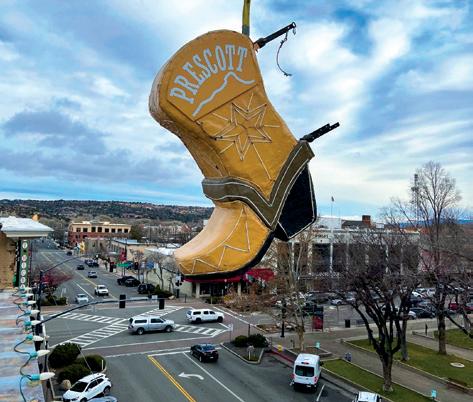
‘Kicking
Prescott, Ariz.
Dec. 31
In 2011, the city of Prescott initiated their own New Year’s Eve party marked by the dropping of a huge cowboy boot from a rooftop flagpole at 10 p.m. and at midnight, both times marked by raucous fireworks. Before and after the drop, a concert on historic Whiskey Row keeps the party going. BootDrop.com

Branson, Mo.
Until Jan. 7
There is something for everyone in the entire family at America’s Christmas Tree City. Events include an array of live singing and dancing performances, an Old Time Christmas experience at Silver Dollar City, a dazzling drive-through Christmas light display, a gingerbread village at Chateau on the Lake, and more.
ExploreBranson.com/Seasons/Christmas



Rear Adm. Reigart risks his career to safely extract a Naval aviator shot down during a Christmas Day recon mission over Serb-controlled Bosnia that captured photographic evidence of war crimes. Although fictionalized, the film was inspired by the real-life rescue of U.S.A.F. Capt. Scott O’Grady.
DIRECTOR
John Moore STARS
Gene Hackman
Owen Wilson
Gabriel Macht RELEASED 2001 STREAMING Hulu


Kids can enjoy learning about our country at the Smithsonian’s National Museum of American History, and it’s free. Several exhibits are just for children, such as Wegmans Wonderplace, Draper Spark!Lab, and Places of Innovation. Other exhibits include Julia Child’s kitchen and the original flag of the Star-Spangled Banner. Several displays that will pique a child’s interest are “America’s Listening,” telling the story of recorded sound; “America on the Move,” with displays of early locomotives and cars; and the “Change Your Game” exhibit that showcases how technology has changed sports. Families can prepare ahead with guides for the children. For more information, visit AmericanHistory.si.edu.
These pages are in the preview.
READ READ
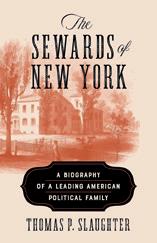
‘The Sewards of New York: A Biography of a Leading American Political Family’
William Henry Seward is best known for his purchase of Alaska in 1867 while secretary of state. He was the most prominent of the politically influential Seward family in 19th-century New York. Using newly discovered family letters, Thomas Slaughter’s book examines the contributions of the family to New York state and U.S. history. It highlights the role played by both its men and women in fostering the Republican Party and eliminating slavery.
Three Hills, 2025 Hardcover, 488 pages

‘Hiking Through’
Follow one man’s healing journey on the world-renowned, 2,000-plusmile Appalachian Trail. After he lost his wife to breast cancer, author Paul Stutzman hiked northbound on the Georgia-to-Maine trail. Along the way, his faith strengthened, and he found a new purpose in delivering a message, especially to men: “Don’t take your spouse and family for granted. Enjoy today fully.” This memoir shares heartache and encouragement, narratives on nature and history, and so much more.
Revell, 2010 Paperback, 332 pages

Zhuan Falun is the main text of Falun Dafa, also known as Falun Gong. With millions of practitioners in over 100 countries, Falun Gong is a spiritual practice that teaches meditation exercises and the principles of Truthfulness, Compassion, and Forbearance.
“
are not included preview.
Falun Gong is an entirely peaceful belief system which encourages the highest standards of moral behavior.
— Lord Avebury, House of Lords, UK
“
Falun Gong is, in my judgment, the single greatest spiritual movement in Asia today. There’s nothing that begins to compare with it in courage and importance.
— Mark Palmer, former U.S. ambassador

SCAN TO ORDER
— Pooja Mor, international fashion model “
Falun Dafa has brought a totally new perspective to my life. In a world where everyone teaches you to fight back, Falun Dafa has taught me to take a step back and think of others first, which has made me a better person inside out.



rituals, silly or serious, build lasting bonds between generations

By Annie Holmquist
Respect for the elderly is one of the most mannerly actions we can teach our children. But how can children have such respect if they only mingle with those their own age? To combat this problem, etiquette instructor Bethany Friske offers five simple ways to cultivate interaction, knowledge, and respect through multi-generational gatherings.
“Put all of the generations at the same table or room if possible,” Friske says, noting that age-segregated seating hinders the younger generation in learning from the older. To mix the generations even more, she suggests numbering every place setting, then requiring each person to draw another number as they go through the food line, matching the second number to the one at the table. Doing so prevents cliques from forming, whether young or old.
1 2
Planning group activities—games, crafts, or walks—is a great way to mix multiple generations, Friske says. One of the best ways, however, is to get people talking. Friske suggests hosts create questions asking, “What is your favorite song?” or “What was your first car?” Guests should write their answers on a slip of paper, then share them verbally. This spawns stories from older guests while also allowing younger ones to share their current interests.
Implementing certain rituals among your extended family, Friske believes, “really does bring the generations together.” It can be a silly game, such as various gift-trading games at Christmas, or sharing Grandpa’s signature cookies when the family gathers. Other ways to create memories include hosting a pie cook-off for Thanksgiving or having an annual progressive dinner where everyone brings a favorite mug in which to eat each course.
Grandma shouldn’t be the only one in the kitchen. Divide the responsibilities of hosting among the generations, Friske says, with the oldest generation bringing the meat, the next bringing the sides, and the youngest bringing dessert. Then make everyone sign up for a cleanup slot, enabling the various ages to “get to know [one another] in a different way in the kitchen chit-chat.” This also diminishes resentment and guilt as everyone shares the workload.
3 4 5
Holidays shouldn’t be the only time multiple generations get together. Friske says that some families host “once-a-month Sunday meals,” a standing invitation with a regular menu item such as pizza, or a dinner and prayer time, where people come and share their prayer requests with one another. You can also make a family recipe together, Friske suggests, or simply plan a time to pull out old memorabilia and reminisce, laughing over favorite memories.


Despite ruthless harassment from the Chinese Communist Party, classical Chinese dance company Shen Yun has flourished. John Perry talks about the power of connection and the role of art in our world today
By Jared Pearman
In the dazzling spectacle of a Shen Yun performance—in which ancient Chinese legends come alive through classical dance, soaring vocals, and a live orchestra blending Eastern and Western instruments—one essential but often overlooked element holds the show together: the MCs.
Millions of audience members have seen Shen Yun’s performances since its inception in 2006. Its eight companies of performers travel the world every year, delighting audiences on six continents. At every show, the audience is greeted by two masters of ceremonies, one speaking in Chinese and one in the local language. John Perry is an American MC, and he’s taken to the stage hundreds of times over the past seven years to act as what he calls “the bridge for the audience.”
Perry describes his role as connecting audiences with a world they may never have encountered. “I have to think, ‘Who are the people I’m talking to?’, put myself in their shoes, and think about what they want to see, why they are here. All the elements of the MC job are pretty much just thinking of others first,” he said.
Between each dance or music piece, Perry’s quick, engaging interludes—delivered in English alongside his Chinese counterpart—guide the flow without overshadowing the performances. This subtle art ensures that viewers, who are often unfamiliar with the 5,000-year-old traditions depicted onstage, feel welcomed into stories of ancient emperors and deities as well as contemporary tales of faith and persecution in China. He and his stage partner make the show accessible to global audiences, turning cultural gaps into a shared appreciation of beauty and goodness.
Perry’s path to the Shen Yun stage is a quintessential American story of self-discovery. Born and raised in Atlanta, he said, “I’m a very typical kind of American Southern boy.”
High school sparked an interest in performing arts through musical theater and singing, including some operatic training. Yet college at Georgia Tech pulled him toward the practical fields of computer science and mechanical engineering. He was initially driven by a youthful ambition to “save the world” through innovations in renewable energy.
As he delved into the sciences, however, he grew disillusioned and doubtful that the answers to the world’s problems could be found in technology. He became depressed and lost direction, spending his free time on video games, social media, and online forums.
It was during this time that he came to learn about Eastern philosophies, starting with the classic Taoist text “Dao De Jing” and discussions about the ancient Chinese concept of “qi,” the
life-energy that runs through the body.
In 2015, while perusing an online forum on Eastern philosophy, Perry discovered Falun Gong, also known as Falun Dafa, a spiritual practice based on the principles of truthfulness, compassion, and forbearance. It transformed his life. He began meditating every day and doing the gentle exercises that characterize the practice. He stopped playing video games and spending all day online. Gradually, he found that his interests changed from ambition and desire to kindness and inner growth.
He decided to shift his studies from engineering to business, which is how he got involved in Shen Yun. Each year, local Falun Dafa Associations organize the Shen Yun shows in their own regions, so when the Atlanta shows were coming up, he decided to start promoting the event and treated it as a marketing internship aligned with his business degree.
As soon as he saw Shen Yun for the first time, he knew he wanted to be a part of it. Promoting it wasn’t enough, and before graduating in 2018, Perry auditioned for Shen Yun—not as an MC,

These pages are in the preview.

Shen Yun’s eight companies travel worldwide, presenting new programming every year. are not included preview.

Shen Yun’s performances bring 5,000 years of Chinese culture to life.
“
A few years ago, the attacks on Shen Yun became very personal for Perry.
By Andria Pressel
here’s Santa?”
Every Christmas Eve, that question is answered by the NORAD Tracks Santa Operations Center, where over 1,000 volunteers stand ready to report Santa’s whereabouts. Though most calls come in between 5 p.m. and 6 p.m. Mountain Time, the phones ring throughout the night as children from all over the world call in to ask for Santa’s location.
The first child called in 1955, and North American Aerospace Defense Command (NORAD) has been tracking Santa ever since. For one special night every year, the systems that keep North America safe—radar, satellites,
On one very special night each year, all eyes are on the sky—especially those at the North American Aerospace Defense Command

and fighter jets—are used to follow Santa and his reindeer as he makes his way around the globe.
American Essence interviewed Capt. Rebecca Garand of NORAD to learn more about the operation.
American Essence: Does Santa’s route change every year, or is it the same?
Capt. Rebecca Garand: While his route varies from year to year, he always visits every home where there are children who believe in him. That said, Santa usually starts at the International Date Line in the Pacific Ocean and travels west.

Every year, the North American Aerospace Defense Command (NORAD) is tasked with the important job of tracking Santa. Above, Capt. Rebecca Garand, public affairs officer, NORAD.
AE: Have kids reported seeing Santa’s sleigh?
Capt. Garand: We haven’t received any reports of kids seeing Santa’s sleigh because Santa arrives to children’s houses only when they are asleep! If children are still awake when Santa arrives, he moves on to other homes and returns later in the night. This makes his route more complex, and with so many gifts to deliver, we recommend that all children get to bed early on Christmas Eve and stay asleep throughout the night to help Santa keep his journey moving smoothly.
AE: What are the most creative questions you’ve gotten?
Capt. Garand: One popular question our volunteers receive is what kind of cookies Santa prefers. In a recent year, one girl proudly shared that she made him lasagna with meatballs just in case he wanted dinner. Every question reminds us how imaginative and thoughtful kids are. It’s part of what makes this night so special.
AE: Does Rudolph’s nose glow the whole time?
Capt. Garand: The constant bright red glow of Rudolph’s nose is just one of the ways that we’re
able to track Santa around the globe. The heat signature generated is picked up by our Persistent Infrared satellites far above.
Exterior aircraft lighting is an important aspect of flight safety and is a federal requirement for airplanes and even hot air balloons. While I am not aware of any flight rules that include flying reindeer, Rudolph’s nose certainly performs this function.
AE: Is Santa’s sleigh getting any makeovers or tech upgrades this year?
Capt. Garand: From what we can tell, Santa continues to rely on the same timeless propulsion system he’s used for centuries: pure Christmas magic. Since 1955, fighter jets have intercepted Santa many, many times. Today those jets include American F-15s, F-16s, F-22s and Canadian CF-18s. When the jets intercept Santa it’s always a friendly occasion: They tip their wings and he smiles and waves back.
AE: Have you had to jump in to help with any mechanical failures with the sleigh?
Capt. Garand: Santa has been flying for centuries without any major incidents that have required external assistance. He’s a great pilot, and he has a top-notch maintenance team that keeps the sleigh in the air.
AE: What about any reindeer failures? Have you had to call in any back-ups, or send in a veterinarian?
Capt. Garand: Santa’s reindeer train all year for this mission, and when the big night arrives, they’re ready—just like we are. They may take short breaks on rooftops to rest and refuel, but we’ve never seen a failure in flight.
AE: Has Santa ever gotten stuck anywhere he needed bailing out?
Capt. Garand: Santa seems to get in and out of homes with and without chimneys with incredible know-how. Although NORAD has different hypotheses and theories as to how Santa actually gets through tight spaces such as chimneys, we don’t have definitive information to explain the magical phenomenon and how he does it without getting stuck.
AE: What does Santa do in case of meteor showers?
Capt. Garand: Santa’s sleigh seems to have built-in evasive capabilities, likely magical, that allow him to navigate safely through even the most complex conditions. We’ve never seen him delayed or diverted due to space debris. We’re always watching the skies—NORAD’s space-based sensors keep a close eye on potential hazards, including meteor activity.
AE: Any hot spots you have to be especially vigilant about—like the Bermuda Triangle?
Capt. Garand: NORAD tracks Santa across all regions, including those with unique atmospheric or navigational challenges. Santa is an expert pilot and has navigated the entire planet for centuries to deliver gifts to children all around the world.
AE: Does Santa ever swing by the International Space Station?
Capt. Garand: Yes, he does! Every year, Santa makes a brief stop at the International Space Station to spread holiday cheer to the astronauts on board. While NORAD doesn’t coordinate with
These pages are in the preview.




Personnel and volunteer reserve officers set up the NORAD Tracks Santa Operations Center in a spare hangar at Peterson Space Force Base, Colo., in December 2023.
Santa directly, our tracking systems have consistently shown a quick visit to low Earth orbit before he resumes his global journey. It’s one of the more magical moments we get to observe!
AE: What are some of the favorite memories from this night that volunteers and personnel have?
Capt. Garand: Last year one of our volunteers told me that a mother, her son, and their service dog Annie called in. The child was really excited and asked if Santa would give Annie some pats and scratches behind the ears when he stopped by. It was a sweet reminder that Santa’s visit means something special to every member of the family (furry friends included)!
AE: What questions have stumped you?
Capt. Garand: One of the most common, and trickiest, questions we get is: “Am I on the Nice List?” That’s a protected document held exclusively by Santa himself, and NORAD doesn’t have access to it. But we always remind kids that if they’re worried about being on the Naughty List, there’s still time to turn things around. We believe in second chances, and we’ve heard that Santa does, too.
AE: NORAD keeps a watch on security threats. What kind of things do you monitor to make sure Santa is safe all through the night?
Capt. Garand: NORAD’s mission is to provide aerospace warning, aerospace control, and maritime warning for the defense of North America. On December 24, we use the same trusted resources (radar, satellites, and NORAD’s fighter jets) to track Santa’s journey across the globe.
While Santa doesn’t need our protection, we are honored to monitor his flight and make sure the skies are clear as he delivers joy to children everywhere.
AE: Santa is awfully jolly for such intense work over such a short period of time—do you have any insights into how he maintains his everlasting good cheer?
Capt. Garand: NORAD has tracked Santa for 70 years, and one thing’s for sure: His cheer never wavers. We suspect that he maintains this jolly composure through a combination of global goodwill, the joy of giving, and perhaps a few cookies along the way. Whatever his secret, it’s working— and he’s the most consistently positive pilot that we’ve ever tracked.

The famed Austrian family brought to Vermont their love of the mountains and holiday cheer
The holiday season brings an intangible warm and fuzzy feeling.
In German, they actually have a word for it: “gemütlichkeit.”
And though it’s not a holiday film, the “gemütlichkeit” is palpable in “The Sound of Music,” one of the most successful movie musicals of all time. The 1965 film is based on the memoir of Baroness Maria von Trapp, iconically portrayed by Julie Andrews.
“Gemütlichkeit” is also a philosophy that Maria
By Cary Dunst
von Trapp’s grandchildren Sam von Trapp and Kristina von Trapp Frame use as guideposts in managing the family’s Austrian-inspired Trapp Family Lodge in Stowe, Vermont.
“It means warm, cozy, professional, but not pretentious hospitality,” Kristina said on a snowy winter day in December 2024. “So that’s really the goal of us inviting people to come here to enjoy it.”
Her brother Sam added: “Singing is also always a big part of the holiday. For our family, having been professional singers, on Christmas Eve, when we

sing with our guests, that’s just a really pure, fun evening for everyone.
“We stress that we’re singing with them. It’s not a concert, so we’re not performing. We’re all singing together, but singing the song ‘Silent Night,’ which was written in the state of Salzburg by two Austrians—that’s very powerful for us. We sing the first verse in German. I’ve learned to bring extra Kleenex because Kristina and I always get a little bit choked up when we do ‘Silent Night.’”
Later that evening, Sam was in his element— the full embodiment of “gemütlichkeit.” He was wearing a cozy sweater and Austrian-inspired vest, a glowing smile, and a twinkle in his eyes.
The siblings and their staff had just successfully concluded their annual Christmas tree lighting, complete with cookies, hot cocoa, caroling, and gathering around the fire.
Mother Nature delivered a picturesque blanket of snow, which continued to gently fall as a folksy guitar-strumming vocalist led hotel guests, locals, and the staff in singing holiday standards such as “White Christmas,” “Rudolph the Red-Nosed
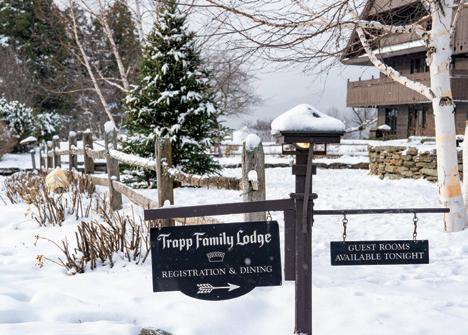
“
When we sing with our guests, that’s just a really pure, fun evening for everyone.
Sam von Trapp
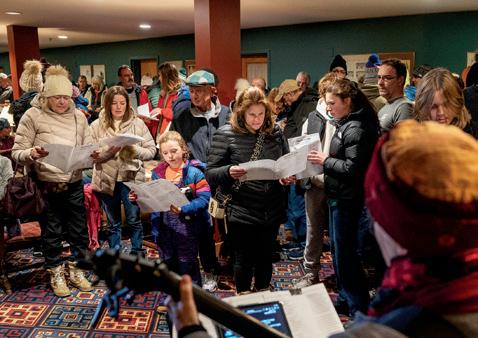


Reindeer,” and, of course, “Silent Night.”
As the lodge’s exterior Christmas lights and tree were lit for the first time this season, the crowd let out a collective gasp of delight.
Fleeing Nazis, Singing on the Road, and Settling in Vermont
The family’s story portrayed in “The Sound of Music” is mostly correct, though many of the details are not accurate.
“We often joked that the personalities of our grandfather and grandmother in the movie could have been switched,” Sam said, drawing a laugh from his sister. “She was the tough one, and he was a bit more of the teddy bear in real life.”
Another detail changed in the movie: In real life, the family was already a renowned singing group throughout Europe, with offers from American promoters, before they escaped Nazi-occupied Austria. Like in the movie, the family had to covertly plan their escape, leaving behind their lavish home and all of their possessions, though they actually boarded a train to Italy, rather than trekking through the mountains. The family’s connections to concert promoters aided them in their passage to America, as they knew that paying
gigs would be arranged upon arrival.
Despite the family’s renown, they arrived in New York City with only $4. They quickly hit the road playing concert halls as a family singing act. They performed for 10 years as the Trapp Family Singers, earning wide acclaim. A brief look on Spotify shows that their most popular songs to this day are from their Christmas album, with “Stille Nacht, Heilige Nacht” (“Silent Night”) among their top five.
These pages are in the preview.
The family originally moved to the Philadelphia suburbs in 1939. They eventually settled on a large property at the top of a hill overlooking the Green Mountains in Stowe, Vermont, in 1942.
“They were trying to get away from the hot, humid summers of Pennsylvania, and they came up, spent the summer of 1942 here in Stowe and fell in love with this environment,” Sam said. “In the final week that they were here, they came up to look at this beautiful farm that all the locals had told them they should see. They saw this view, and they just felt this is where they should be.”
Kristina added: “In those days, also, it wasn’t so glamorous to be living on a hill. It was a rough dirt road to get up here, the land was really rocky, so they had a lot of work to do to clean everything up
and make it this beautiful 2,600-acre property that we have these days.”
When they purchased the property it was a working farm with run-down buildings. Through significant effort and family teamwork, they opened it as a hotel at a time when the downhill ski industry was drawing many enthusiasts to Stowe. Throughout the resort are photos of the family, and you can see that they truly built the home themselves. One image shows the daughters Maria, Agathe, and Johanna in their Austrianstyle dresses, pouring concrete with their father, Baron Georg.
“The way that this started as a hotel is important because it was the family’s home,” Kristina said. “They were inviting people to come and stay with them. When they were traveling and singing, they said, ‘We have this beautiful place in Vermont. It reminds us of Austria. You must come visit.’
“So they were really inviting people in the beginning, and then when the original hotel burned down in 1980, our dad’s vision was to create something that still had that really comfortable, homey atmosphere.”
Kristina and Sam’s father Johannes is the 10th, youngest, and only living child of Maria and Georg, and the only child born in America. As a young adult, he served as a missionary in Papua New Guinea, attended Dartmouth College upon

“
When they purchased the property it was a working farm with run-down buildings.


With their can-do attitude, Belinda Kelly and Venise Cunningham transform the season’s harvest into drinkable delight
By Eric Lucas
Simple syrup is a simple thing—sugar and water.
The story of Washington state’s Simple Goodness Sisters illustrates how just keeping things simple can bring unexpected, marvelous results. Belinda Kelly and Venise Cunningham both left urban lifestyles and headed to the Cascade Range foothills seeking less hectic lives. The outcome was a thriving soda shop in an old coal industry town, which has now given birth to a vivid new book that details the art of crafting and using syrups.
Though simple syrup is indeed pretty simple (boil water and then add sugar and flavoring ingredients, such as lavender), the 100 other syrups, infusions, concoctions, and related recipes in the two sisters’ book expand voluminously on that basic idea. Simple, though not always easy.
“People ask, ‘Aren’t you giving away your secrets?’” reported Cunningham of the reaction to “Drink Your Garden: Recipes, Stories, & Tips from the Simple Goodness Cocktail Farm.” “But there’s nothing secret about it. People have been doing this for centuries. We just happened to put it in a book.”
The 256-page coffee-table book features an introduction to syrup-making—“It’s an art, not a science,” said Kelly—along with hundreds of recipes for syrups, cocktails, and mocktails. These range from mainstream items such as strawberry syrup to wildly exotic creations such as “buzz button gin,” a cocktail that includes the legendary Chinese toothache plant, whose flowers impart a pleasant and mysterious numbing effect in the imbiber’s mouth.


“We promise, if you bring this to a party, you’ll instantly become the most interesting person in the room,” the sisters declared of using the toothache plant.
Beyond that, there are cordials, shrubs (also known as drinking vinegars), tinctures, garnishes, liqueurs, juices, ciders, teas, jams, and pickles by the dozens.
Ever thought of concocting kale-chard vodka?
Pickled celery or chive blossoms?
A lilac flower cordial?
Fig-cardamom shrub?
They’re all here. There is also an extensive discussion of low- and no-alcohol cocktails and mocktails, as well as horticultural guides to many herbs and flowers, and an extensive compendium of infusion procedures, which vary from plant to plant.
The book is lavishly illustrated with vivid, evocative photography worthy of Martha Stewart. Sprinkled throughout are nuggets of Cunningham and Kelly’s wryly heartfelt appreciation for the lives they have created and the lifestyle they are depicting.
“As soon as we began gardening, we realized why our Nanny’s [grandmother’s] basement was lined with shelves, each boasting a rainbow of jars with hand-labeled lids. … Growers cannot bear to throw out or waste what they’ve spent months carefully tending, and so they must create something, anything,” they write.
Thus, their no-waste spiced lime ginger shrub, for which they advise that readers save rather than discard citrus peels in their kitchen.
But as elaborate and comprehensive as “Drink Your Garden” is, the two sisters hope their readers will consider the book to be just a beginning and proceed to exercise the same experimental imagination that they bring to their craft.
“We provide recipes as a start,” Cunningham said. “Our generation is probably the first that grew up without home economics education; it was all career and life skills. Instead of learning about sponge cake, I wrote a lot of resumes,” she reported, not entirely jesting.
“But I love food, that’s what got me started on all this,” Kelly said.
“And I was drawn to gardening because I like doing things with my hands,” added Cunningham.
Both credit their forebears for their mid-30s detours from modern corporate livelihoods to handmade traditions. Their dad operated his own


small construction supply and woodworking business in a suburb south of Seattle most of his life. Meanwhile, their grandmother Nancy infused their childhood with many of the do-it-yourself experiences that were rapidly dying out in the late 20th century: wild berry picking, canning and pickling, and generally using your hands to make use of what nature supplies.
“We may not have had home economics in
CLOCKWISE FROM ABOVE The sisters’ farm supplies many of their ingredients; they’ve turned syrup-making into an art form, creating more than 100 varieties; recipes range from classic to creative; fresh edible flowers add fragrance and visual interest.
These pages are in the preview.


school, but Nanny was uber-functional, and a lot of that rubbed off on us,” recalled Kelly. First, though, college and business beckoned, until both developed a growing desire to leave urban life behind. After a convoluted path from city to rural foothills, their soda shop became the genesis for their book.
As for the simpler lives they were seeking:
“Hey, out here we still head to the neighbors’ house to borrow a cup of sugar,” Cunningham reported. While a drone can fly from Wilkeson to downtown Seattle in a half-hour, almost every parking spot on the little town’s main street is empty at 10 a.m. on a weekday morning; the Simple Goodness Soda Shop is a quiet café serving coffee drinks to moms with toddlers. The sisters describe it as a “farm-to-glass” reimagining of
the traditional soda fountain, an early 20th-century mainstay of American life. The soda shop is housed in a 120-year-old clapboard building, originally a pharmacy in what was a booming coal town. “Thirty bars, a brothel—place was bustling,” Kelly said.
Today, their shop features wood plank floors, exposed old-growth Douglas-fir beams, a compact soda fountain where you may find the day’s special to be a huckleberry spruce tips lemon spritzer, a bulletin board with local postings, and restroom posters that ask, “What would Dolly do?”
Just a 10-minute drive away, Cunningham’s rural 10-acre property, Simple Goodness Farm, features an exuberant 1-acre garden of herbs, flowers, and vegetables that would get an F for tidiness in the home economics class she never had. For example, there’s an unruly bed of self-propagating potatoes.
“If it’s willing to grow all by itself, who am I to tell it no?” said Cunningham, evincing the cheerful, matter-of-fact perspective one might have found in a pioneer mother, housewife, and entrepreneur in Wilkeson over a century ago.
Both sisters left the Seattle corporate world behind for their new lives in the Cascade foothills—perhaps not the same geographic path as 19th-century pioneers, but spiritually similar.
Kelly was a Microsoft recruiter until she left the tech giant to focus on her “side hustle” as a mobile bartender, dba Happy Camper Cocktail Company.
“I decided if I was going to ditch the 401(k), I was going to do exactly what I wanted, so here I was hauling mixers such as thyme-rosemary in big jugs in my converted camper to parties and events,” she said.
Meanwhile, Cunningham departed a corporate career at Redfin to become a real estate agent. As the soda shop took off, she and her husband transformed the 10-acre former dairy operation they bought into today’s farm. It supplies many of the ingredients the sisters use for syrups at the soda shop. They bottle and sell many of them online, including rhubarb-vanilla bean, one of their first and most popular concoctions.
Departing good, safe corporate careers to establish a handmade soda shop would likely strike most Americans as whimsically risky, but Cunningham’s philosophy is “feed your dreams, starve your fears.” That’s pretty simple. And full of flavor.


The gifted scientist also solidified his reputation as a passionate musician
By Rebecca Day
Science and the arts are sometimes viewed as opposites, but for revered scientist Albert Einstein, the two subjects were inextricably linked.
Einstein introduced the world to his Theory of Special Relativity in 1905 and his Theory of General Relativity in 1916. He also provided the groundwork for modern quantum theory. His passion for scientific experimentation matched his passion for the violin. He once remarked to the Saturday Evening Post in 1929, “If … I were not a physicist, I would probably be a musician.”
What role did his beloved violin, nicknamed “Lina,” play in his work? Why did he view science and music as harmonious? Based on stories told by his colleagues and remarks made by his friends and family, Einstein was always happy to provide eloquent answers to these questions. With their insights, a picture forms—one that reveals that the scientist’s tireless work was fueled by a mind devoted to the classical works of Mozart and the universal truths found in music.
In an article featured in National Geographic, Mitch Waldrop wrote, “Music was far more than a sideline to Einstein’s work; it was central to everything he thought and did.”
While Einstein worked on equations like his famous E=mc2, which posits that mass and energy are interchangeable, his beloved violin was never far out of reach. In Walter Isaacson’s 2008 biography of the German physicist, “Einstein: His Life and Universe,” the author states, “Music was no mere diversion. On the contrary, it helped him think.”
In an article for Strings Magazine, Rebecca Rego Barry wrote that Einstein’s son, Hans Albert, once said

of his father, “Whenever he felt that he had come to the end of the road or faced a difficult challenge in this work, he would take refuge in music and that would solve all his difficulties.”
Music wasn’t simply a part of the physicist’s scientific world, it was the essential element to his life. He once said, “Life without playing music is inconceivable for me. … I live my daydreams in music. I see my life in terms of music. … I get most joy in life out of music.”
Albert Einstein (1879–1955) was born in Ulm, Germany, to Hermann and Pauline. When he was 6 years old, Pauline began taking young Albert to violin lessons. A talented pianist herself, she viewed music as an important part of a child’s education and development. At first, her son wasn’t thrilled about dedicating his time to lessons and practice, but he stuck with the instrument for several years.
Then, at the age of 13, he discovered Mozart’s violin sonatas. Though he once viewed prac -
These pages are in the preview.
ticing the violin as a dutiful task that pleased his mother, things changed after his discovery. Learning violin music now felt like endless play to the blossoming visionary. His discovery of Mozart was the catalyst to a lifelong love affair, especially with classical compositions.
In 1933, Einstein moved to America to escape Nazi-occupied Germany. Upon his arrival, he headed to New Jersey, where he’d accepted a position as a professor at Princeton. In the Garden State, he solidified his reputation as not only a gifted scientist but also a passionate musician.
During his tenure at Princeton, he could be found at his friends’ homes playing chamber music during their gatherings. During holidays, he’d often set out about his neighborhood playing his violin for neighbors and getting everyone in a festive spirit. He even joined carolers as they sang Christmas songs door-to-door.
He also hosted weekly music sessions at his home every Wednesday, creating a casual setting for his musician friends to play some of their favorite works.
His passion for scientific experimentation matched his passion for the violin. “
Einstein was a passionate yet self-confessed amateur violinist. To this day, there’s debate on whether he was as good as his reputation suggests. No recording exists of him playing, so we must rely on accounts from those familiar with his playing style. These offer different opinions.
In her article, Barry wrote that Ian Ehling, the New York director of fine books and manuscripts at Bonhams auction house, said, “The jury is out about whether he was good at playing the violin, but he was definitely passionate about it.”
are not included preview.
One funny anecdote comes from a time that Einstein played in a quartet. Violin virtuoso Fritz Kreisler was less than impressed:
“Legend has it that when he missed yet another entrance while playing in a quartet with Fritz Kreisler, the great violin virtuoso turned to him and asked, ‘What’s the matter, professor? Can’t you count?’”
Despite his occasional shortcomings with timing, his peers viewed his ability to convey emotional depth in whatever work he played as impressive. One of Einstein’s friends once noted, “There are many musicians with much better technique, but none, I believe, who ever played with more sincerity or deeper feeling.”
What he lacked in technique he made up for in conviction, which brings to mind a quote by the great Ludwig van Beethoven: “To play a wrong note is insignificant; to play without passion is inexcusable.”
In his biography on Einstein, Isaacson detailed how music revealed the laws of nature to the physicist. This created an inseparable connection “to the harmony underlying the universe, to the creative genius of the great composers, and to other people who felt comfortable bonding with more than just words. He was awed, both in music and in physics, by the beauty of harmonies.”
For the amateur musician, both Mozart and
Bach were the composers who best channeled the order of the universe in their works. Einstein once wrote, “Mozart’s music is so pure and beautiful that I see it as a reflection of the inner beauty of the universe itself.”
In his National Geographic article, Waldrop explained the possible reason that Mozart and Bach were Einstein’s favorite composers: “The music of Bach and Mozart has much the same clarity, simplicity, and architectural perfection that Einstein always sought in his own theories.”
Those most familiar with Einstein’s work understand the paramount role music played in his professional pursuits. In 2018, during an event in New York put on by Bonhams auction house, one of his violins sold for a whopping $516,500.
The violin was made by a cellist and cabinet maker, Oscar H. Steger, who constructed musical instruments when he found the time. The instrument features different woods, including maple sides and a spruce top. It also dons a classic scroll headstock. The inscription carved by Steger reads, “Made for the Worlds [sic] Greatest Scientist Professor [sic] Albert Einstein By Oscar H. Steger, Feb 1933/Harrisburg, PA.”
As Einstein aged, he lost the ability to play properly across the violin’s neck with his left hand. Though he could no longer perform, he remained active in the classical music community.
After Einstein’s death in April 1955, writer Jerome Weidman penned a tribute to the late professor titled, “The Night I Met Einstein.” Published in Reader’s Digest, the story details the evening Einstein inadvertently helped Weidman overcome his “tone deaf” ear while at a dinner party. He escorted the writer to a study and put on several records. Before Weidman knew it, he was participating in pitch training, singing back melodies to Einstein after they played on the record, per the scientist’s instructions.
Weidman was floored when they returned to the chamber music accompanying the dinner and he, for the first time ever, had a general sense of the notes and melodies being played.
When Einstein explained to the dinner’s hostess what the two had been up to, he said, “My young friend here and I … were engaged in the greatest activity of which man is capable.”
When she asked what that activity was, Einstein smiled, and said: “Opening up yet another fragment of the frontier of beauty.”
Hoagland Howard “Hoagy” Carmichael composed four of the most recorded songs in the Great American Songbook, including his 1927 hit “Stardust.”

By Dean George
The versatile musician captivated audiences with nostalgic melodies that evoked simpler times
he Great American Songbook—the 20th century’s canon of favorites—is replete with songs celebrating life, romance, and high society. But one esteemed songwriter gained renown for “homeand-hearth” songs that dealt with simpler themes like the longing for home, moonlit rivers, and a nightingale’s song.
Hoagland Howard Carmichael (1899–1981) of Bloomington, Indiana, came from different family and musical roots than notable songwriters like George and Ira Gershwin, Irving Berlin, and Oscar Hammerstein. The latter were first- and second-generation immigrants from Eastern Europe who grew up with the diverse sounds and urban bustle of New York. Carmichael grew up in a small Midwestern town surrounded by towering forests, golden wheat fields, and cloudless blue skies.
Biographer Richard M. Sudhalter wrote that Carmichael’s songs “can evoke place and time as vividly as the work of Edward Hopper or Sinclair Lewis, the essays of H.L. Mencken, or the humor of Will Rogers.”
Despite his hardscrabble youth and lack of formal piano instruction, Carmichael is credited with composing four of the most beloved and timeless songs included in the Great American Songbook: “Stardust” (1927), “Georgia on My Mind” (1930), “The Nearness of You” (1938), and “Skylark” (1941).
Carmichael believed that song melodies were never written, but discovered or uncovered.
would sneak out to the city’s nightspots like Indiana Avenue’s Madam C.J. Walker Theater to hear touring black musicians.
As an adult, Carmichael considered Louis Armstrong a close friend. Armstrong premiered many of Carmichael’s songs in concerts and records. Some of those recordings helped his songs gain national recognition as early as 1933.
Other than his mother’s basic piano instruction, the only other tutoring Carmichael received was from Reginald Alfred DuValle, an Indianapolis band leader and pianist. DuValle taught the skinny boy, a boy who enjoyed what in the 1920s was termed “hot music”—the art of improvisation.
““Never play anything that ain’t right,” DuValle advised him. “You may not make any money, but you’ll never get mad at yourself,” Carmichael remembers his teacher saying in his second memoir, “Sometimes I Wonder” (1965). The future prolific songwriter took that advice to heart. It explains why he took weeks or even months to polish a song. Curiously, Carmichael believed that song melodies were never written, but discovered or uncovered:

Carmichael drew inspiration from black musicians of the day, including Louis Armstrong and Duke Ellington. When the Carmichaels lived in Indianapolis as his father chased jobs, Hoagy
You don’t write melodies, you find them. They lie there on the keys waiting for you to find them. They have always been there. If you find the beginning of a good song, and if your fingers do not stray, the melody should come out of hiding in a short time.
Carmichael’s Musical Versatility College campuses in the Roaring Twenties were ground zero for hot music and piano ragtime. By the time Carmichael enrolled at Indiana University in 1920, his passion for music was insa-
tiable. If the music was exciting and had a beat, he was a fan, a student, and soon an imitator thanks to his extraordinary gift of playing by ear.
Carmichael composed his first song, a Dixieland number named “Riverboat Shuffle,” while a student at Indiana University. Originally called “Free Wheeling,” it was renamed in 1924 when recorded at a small recording studio in Richmond, Indiana, for Gennett, a fledgling record label.
A sprightly, upbeat number, it was performed by the Wolverine Orchestra, led by legendary cornetist and Carmichael’s close personal friend Bix Beiderbecke. Beiderbecke and William Moenkhaus, a European-trained classical pianist and composer who also enjoyed 1920s music, were huge influences on Carmichael.
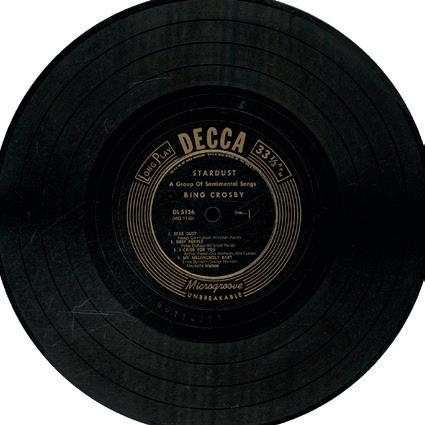

Beiderbecke helped influence Carmichael’s jazz roots while Moenkhaus introduced him to European classical music. Whereas Beiderbecke played by intuition, Moenkhaus played by intellect and training. Together, their influence shaped Carmichael’s music throughout his career. Their untimely deaths so close together at age 28 also inspired his creativity as a composer of popular music.
It was Carmichael’s flexibility and adaptability to meet changing public tastes that helped his career flourish throughout the 1930s, 1940s, and the first half of the 1950s. He wrote an estimated 650 songs over four decades. They spanned a range of musical genres, from ragtime and jazz to blues, pop music, and songs for movies such as “Ole Buttermilk Sky” (“Canyon Passage,” 1946) and “In the Cool, Cool, Cool of the Evening” (“Here Comes the Groom,” 1951). The latter earned Carmichael an Academy Award nomination for Best Original Song.
Of all the memorable melodies Carmichael wrote over the years, none is more synonymous with his name than “Stardust.”
A Song for the Ages Carmichael’s signature song has been recorded over 1,500 times, and its melody and lyrics are as poignant today as they were nearly a century ago. The tune was written and recorded on October 31, 1927, as a medium tempo jazz instrumental titled “Star Dust.” Two years later, lyrics were added
by Mitchell Parish, a lyricist for New York music publisher Mills Music. The lyrics made the tune unique—now it was a song about a song. It was recorded as an upbeat piano solo and renamed “Stardust.”
These pages are in the preview.
In 1930, the popular Isham Jones’s dance band recorded “Stardust” as an instrumental ballad, making the song a national hit on radio. In 1931, trumpeter Louis Armstrong and trombonist Jack Teagarden helped the tune gain additional popularity. That same year, crooner Bing Crosby recorded the first vocal version of the song that had a verse and chorus. By the mid-1930s and 1940s, several popular big bands had recorded different arrangements of “Stardust.” Artie Shaw’s band added strings to the composition and sold an estimated 16 million copies.
The timeless melody of “Stardust” has even resonated on the silver screen with appearances in “My Favorite Year” (1982), “Goodfellas” (1990), “Sleepless in Seattle” (1993), and “Casino” (1995). In 1995, “Stardust” was welcomed into the Grammy Hall of Fame.
The slightly built songwriter with the “flatsy through the nose” voice, as he described himself, also appeared in 11 Hollywood movies as a piano player with stars like Humphrey Bogart, Lauren Bacall, Myrna Loy, Dana Andrews, and Kirk Douglas, and one TV movie and two TV shows to boot. His movie roles were generally what he did best in real life: intoxicate listeners with unforgettable melodies that exude nostalgia and yearn for simpler times.
not included preview.

The surprising odyssey of Nat King Cole’s ‘The Christmas Song’
Hearthstone Historic House Museum celebrates its electrical history in Victorian style
By Deena Bouknight
Candles glow at the Hearthstone Historic House Museum in Appleton, Wisconsin. But on September 30, 1882, the two-story, 9,000-square-foot, limestone-brick residence became the first in the world to light its interior using hydroelectricity. It came from a central system designed by Thomas Edison. In fact, the standard command to “turn the lights on” literally originated in this house. Visitors to the house museum can view aspects of the lighting system, including original and working Edison electroliers (light fixtures), light switches, and wiring.
Hearthstone Historic House has been on the National Register of Historic Places since 1974, primarily for the technological milestone that took place there. The Fox River, which flows across central and east-central Wisconsin and directly through Appleton, allowed for the possibility of hydroelectricity. This new, green energy source came at a time when the Industrial Revolution was responsible for excess pollutants pouring into the atmosphere.
Hearthstone’s owners, industrial entrepreneur Henry Rogers and his equally visionary wife, Cremora, were acquainted with Edison’s work related to electricity and the light bulb. Edison had established the first commercial steam-powered power plant at Pearl Street Station in New

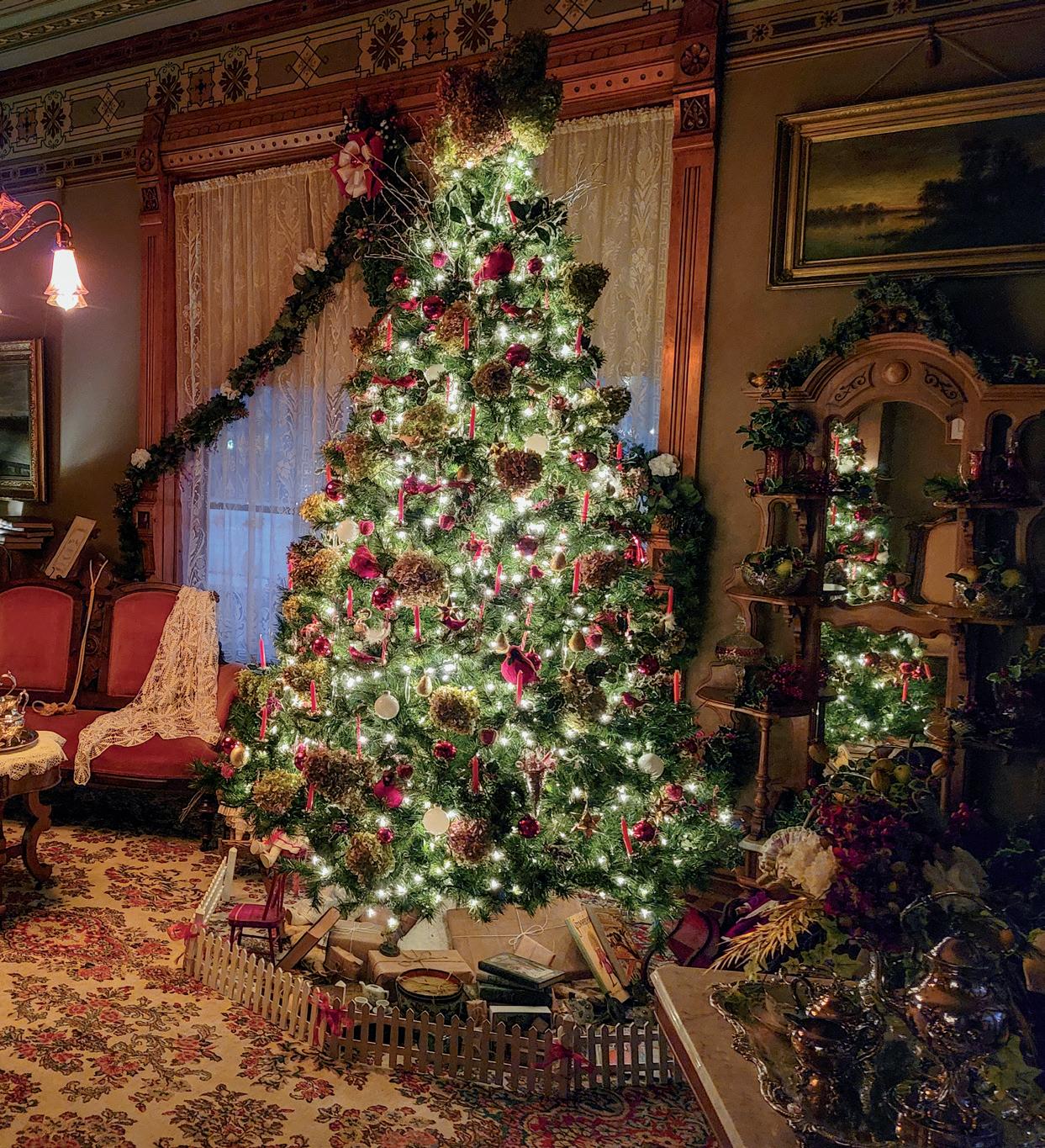
York. Thus, Rogers and a few investors decided to use the power of the Fox River and water wheels at a paper-pulping operation to try to generate electricity. After some trial and error, they were successful—initially lighting up Hearthstone. Eventually, Rogers and his investment partners formed the Appleton Edison Light Company. The successful electrification of Hearthstone quickly lit the way for the technology to be used in residences and commercial buildings throughout America.
It was in December of 1882 that the first Christmas lights were invented by Edward H. Johnson, a vice president of the Edison Electric Light Company. He had 80 red, white, and blue electric light bulbs hand wired for him, and he used them to decorate his New York home—just a few months after Hearthstone lit up for the first time.
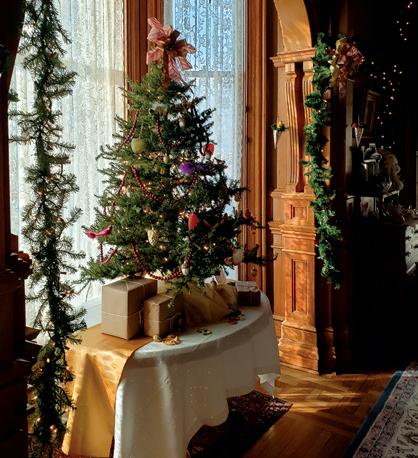

These pages are in the preview.
are not included preview.

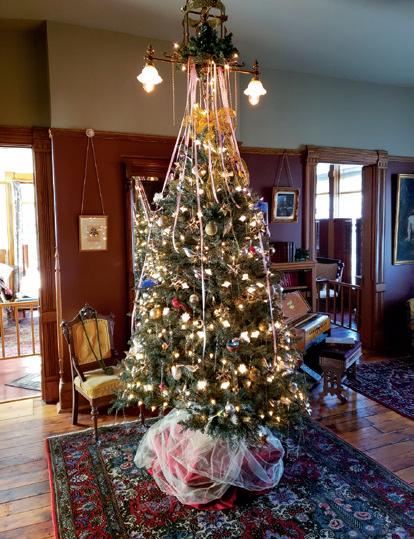
While 14 of the 39 rooms at Hearthstone Historic House are accessible year-round, its grandest display is exhibited during the Christmas season. According to Executive Director George Schroeder, Hearthstone’s first public, illuminated Christmas celebration was in 1987, which was also the first year the museum opened.
“We’ve been decorating and celebrating every year since,” he said.
Hearthstone’s curator, Lynne Phillips, develops new decorative themes years in advance, and preparations for each year’s Christmas extravaganza begin at least 14 months out. “At the very latest, the execution starts in earnest in January,” she said. “As a result, Christmas decorating is a year-round process, taking 11 to 14 months from conception to finished installation.”
All this planning results in an authentic Victorian Christmas presentation, primarily to give a nod to the house’s Queen Anne Victorian architectural style and interior design. In the past, themes have centered on author Charles Dickens and the book “Little Women.”
A main focus is also always on natural elements, but this coming season, nature is especially highlighted.
“Victorians loved to bring the outdoors indoors,” Schroeder said.
ABOVE
With its 12-foot ceilings, the parlor showcases Hearthstone’s fullsized Christmas tree.
LEFT
A “chandelier” tree incorporates an electric light fixture as a decorative tree topper.
The decorations serve to enhance the ornately appointed interior. Showcased is Hearthstone’s white oak, cherry, and bird’s-eye maple handcrafted workmanship, as well as Victorian period furnishings, art, lighting fixtures, and accessories.
“This year, each room has a theme, such as trees, vines, flowers, birds, fruits and vegetables, marine life, and animals,” Phillips shared.
For fire safety, “most of the elements are unfortunately artificial, though we will be using dried natural items and taxidermied animals” common during the Victorian era. “Hearthstone has amassed a large collection of Christmas ‘raw materials’ over the past 39 years, so the majority of the decorations and ornaments will come from that trove.”
Christmas decorations are arranged each year not only by the curation staff and volunteers but also by some of the local Fox Valley Technical College’s Interior Design students.
“Every year, our volunteers take the raw elements—a plain wreath or swag, ribbon, wire,

American artist and educator John Ferguson Weir (1841–1926) was the founding dean of Yale’s School of Fine Arts. While he gained national recognition for his dramatic interiors of foundries, he began his career as a landscape painter. His magical “Christmas Eve” painting showcases his skill at capturing illumination and combines his two passions: fine art and religion.
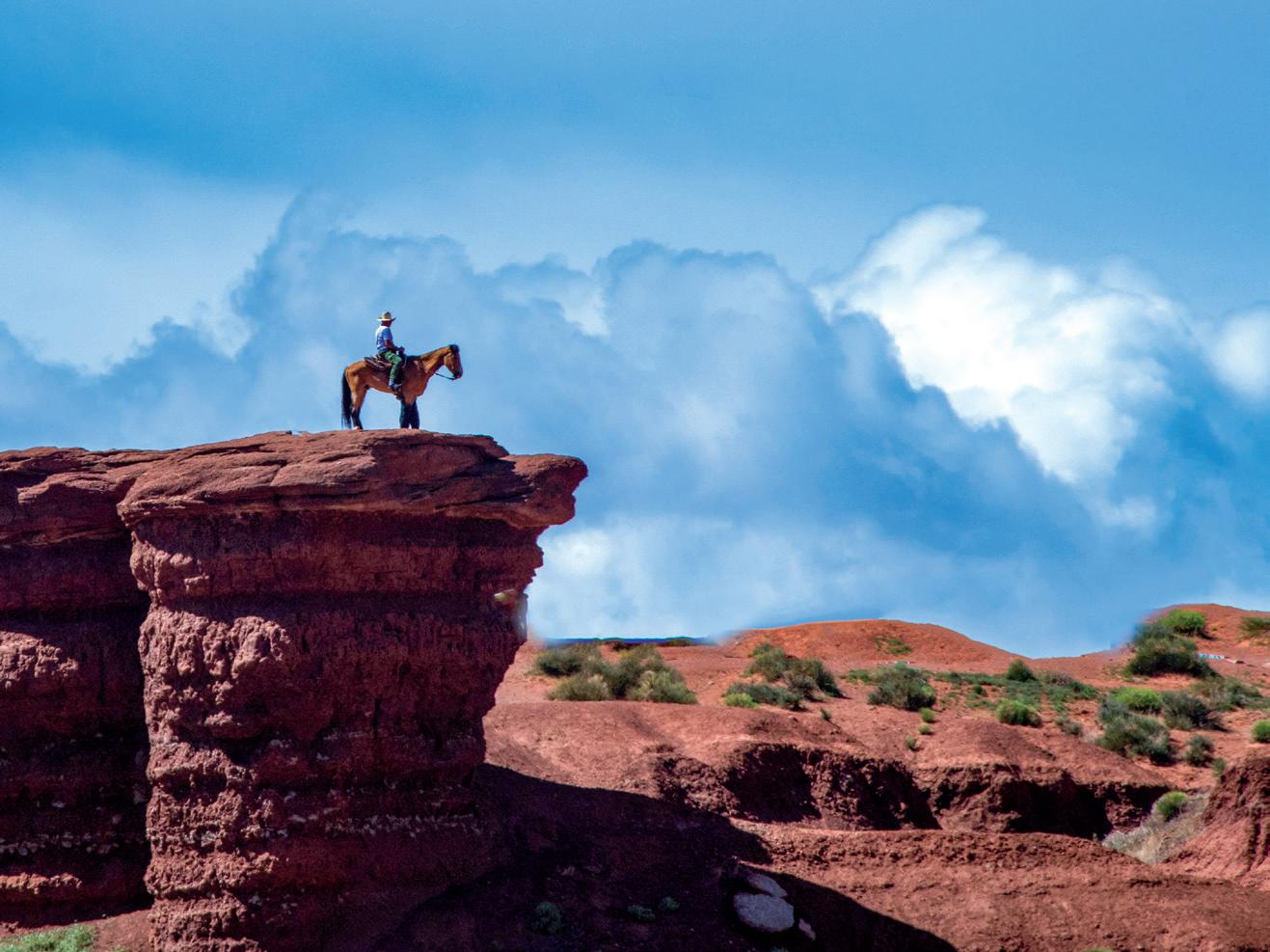
Rediscover the heart and soul of our nation with American Essence, a bimonthly magazine celebrating America’s rich tapestry of cultures and landscapes. You’ll find inspiring tales of courage, fascinating tidbits from history, expert tips for healthier living, and more.
Meticulously curated and full of hopeful stories, each issue is a celebration of the American spirit.


“I was uplifted; I was filled with hope… The world is a better place because of Shen Yun.”
—Richard Swett, former U.S. Congressman
“Magnificent… very enlightening! I highly recommend it to anyone.”
—Tony Robbins, motivational speaker

I love Shen Yun. A story of incredible hope and spirit! Everyone around the world should see it.”
—Rita Cosby, Emmy Award-winning journalist “
“There is a massive power in this that can embrace the world. It brings great hope... It is truly a touch of heaven.”
—Daniel Herman, former Minister of Culture of the Czech Republic
“I encourage everyone to see and all of us to learn from.”
—Donna Karan, founder of DKNY